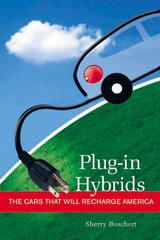In his recent post, "In Race to Market, Nissan’s Electric Car Takes Shortcuts," Siry makes the point that CEO Carlos Ghosn's enthusiasm and charisma alone couldn't be enough to get such a job done so quickly. He writes that the urgency of the project "appears to have driven the company to take some shortcuts."
Sounds ominous. Ultimately, I'm not sure what he's actually getting at. Because Siry makes only two points. Neither of certain significance.
First, he suggests Nissan overstates the range of the LEAF. The 100 mile range cited by Nissan uses "a number tied to the most optimistic benchmark, the LA4 cycle." I don't doubt that this is true. The LEAF pack has fewer kWh than my RAV4 EV, but could be almost as heavy. Until we get final specs on weight, and drive the car around a bit, we won't know to what extent people will need to handicap official range numbers as they do EPA gasoline mileage ratings. Big surprise, your actual mileage may vary. Buyer beware!
Second, and the point on which the article devotes most attention, is whether Nissan is "cutting
 corners" by forgoing an active thermal management (HVAC) system for the batteries. Instead Nissan is relying on air circulation with a fan.
corners" by forgoing an active thermal management (HVAC) system for the batteries. Instead Nissan is relying on air circulation with a fan.Now I don't know whether something about lithium, regardless of chemistry or packaging, will prove to require an active system. But I do know, interestingly and perhaps relevantly, that the electric car that has probably driven more miles than any other model, the Toyota RAV4 EV, does not have batteries with an active system. A fan circulates air. The Honda EV+ used the same Panasonic EV-95 NiMH battery modules with an active system, and those packs didn't last as long. Many EV+ packs were exchanged during their brief time on the road. At least with NiMH, Toyota's passive system worked out better in the real world. Of course the cooling system may have had nothing to do with the the difference in performance of the same batteries in two Japanese EVs, but we'll never know.

Siry notes the different approach being taken by GM for the Volt. They reverted to the T-shaped tunnel configuration for the battery used in the EV1. (How did that work out?)
I may be approaching this too simply, but the tunnel has never made sense to me. It eliminates the possibility of a fifth passenger seat. And I find it makes me feel confined. The batteries, too, enshrouded on three sides, require, apparently, an active thermal management system.
The RAV, on the other hand, suspends the batteries below the vehicle. There is minimal loss in cabin space and a large surface below helping dissipate heat, which is an issue with NiMH, too. And we find that the LEAF's battery pack, too, will be located under the floorboard. Maybe that's the key. Keep the batteries low and spread them wide.
I don't know, of course, but I'm willing to give Nissan the benefit of the doubt.
I'm giving Tesla and CODA and GM the benefit of the doubt, too.



10 comments:
That is, of course, Darryl Sneary's opinion, and only time will tell what the truth is.
My own opinion is that Nissan has not taken any shortcuts in producing the Leaf. After all, they have been developing lithium batteries, and testing them in EVs, for at least 15 years now, i.e., much longer than Sneary has been a "player" in the EV movement.
Does it really make sense to accuse Nissan of not having thoroughly tested them out, in all kinds of conditions and configurations? Just because they have kept their cards close to their chest does NOT mean that they are "rushing" to market.
It's like the difference between an air cooled or liquid cool ICE I guess. I'm just glad I get to pick an CHOOSE thank you very much. I hope to see MANY ways to make a plugin. I wouldn't put any of them down. Unless they are scamming ZEV credits. Ok, I know, get over it.
He's a bit surprised, as are all of us, that Nissan has emerged as the first big automaker to manufacture a mass-produced electric car.
Erm .. Mitsubishi reps would be really surprised to hear that, too. MiEV, anyone ?
It was extremely interesting for me to read the blog. Thanks the author for it. I like such themes and anything that is connected to this matter. I definitely want to read more on that blog soon.
Truly yours
Steave Markson
I agree you have a point on battery layout
my neighbor's electric 1963 Ranchero
http://www.evalbum.com/2264
has air cooling for the Thundersky LiFePo4
78 cell pack. battery in box under bed one square box. fans switch on at 140 degrees F. last summer with up to 110 F. ambient temperatures, fans never came on.
usually only pull 3C. On 20 percent grade about a mile or two long will pull 5C to maintain 60 mph, , 600 foot rise in elevation.
we were concerned about a heat problem, so far cells haven't gotten warm at all.
I'm curious as to how this car will turn out. There's only one way to find out and that's to wait until someone gets one and uses it out on the street for a test drive then gives feedback about how it is. Nissan is a good automobile brand and it's never failed its buyers.
The post touched different topics, but the most important to be addressed was the necessity of improving technology in the industry. A variety of new techniques and exhibitions were exposed.
myspcars:Concept Renault Dezire: The Diamond is sexy
When you plan to buy a used car, you should never be fooled by cheap prices and fresh paint since you might end up paying more in the long run.
Post a Comment